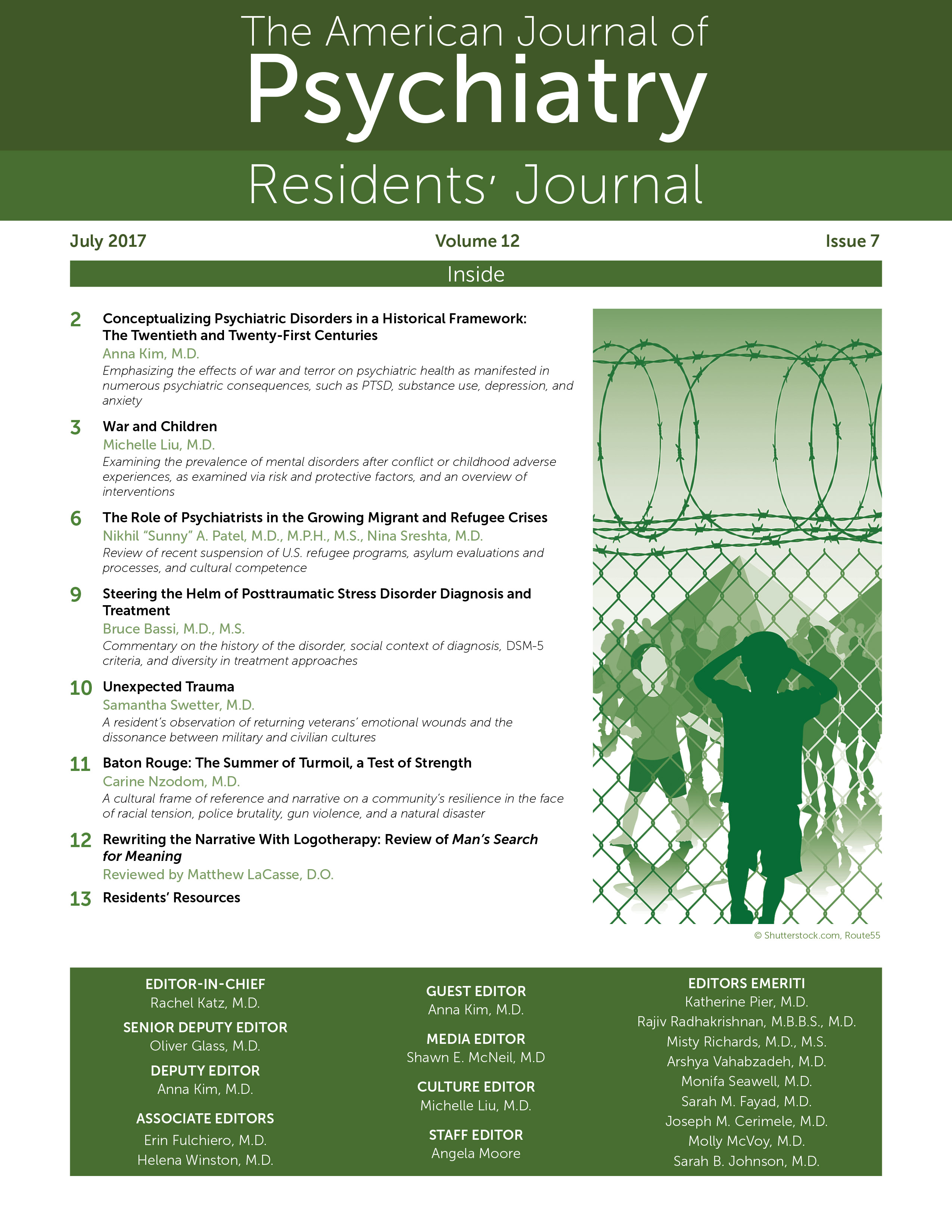Conceptualizing Psychiatric Disorders in a Historical Framework: The Twentieth and Twenty-First Centuries
“The twentieth century will be remembered as a century marked by violence. It burdens us with its legacy of mass destruction, of violence inflicted on a scale never seen and never possible before in human history. But this legacy—the result of new technology in the service of ideologies of hate—is not the only one we carry, nor that we must face up to. Less visible, but even more widespread, is the legacy of day-to-day, individual suffering.” (1, p. ix)
The 20th century marks a time of scientific development: from the invention of the radio and television to the creation of the computer and the atomic bomb, from the discovery of the double helix structure of DNA by Watson and Crick to the creation of animal clones and artificial nucleotides. New knowledge during this time gave rise to unique considerations and responsibilities about war, power, and mankind. More importantly, as Nelson Mandela emphasizes in the above quote, these changes are reflected through their effects on the human mind and brain.
The traumatic effects of war and terror on human beings have long been known. According to psychologist Edward Tick, posttraumatic stress disorder, or PTSD, has acquired more than 80 names over the years (2). During the Civil War, the internist Da Costa noted that many veterans suffered from shortness of breath, anxiety, and chest pain, and he named the syndrome “irritable heart.” It was not until the 20th century that these concerns heightened. Following World War I, the term “shell shock” arose, and following World War II, it evolved into the phrase “war neurosis” (2). In 1980, PTSD became an official diagnosis when the American Psychiatric Association added it to the third edition of the Diagnostic and Statistical Manual of Mental Disorders (3). This addition marked a change in the conceptualization of the disease, as the etiological agent was placed outside the individual (a traumatic event) rather than seen as an inherent, individual weakness (a form of traumatic neurosis). Decades later, we continue to realize this disorder’s impact on individuals’ lives (4).
Effects of war and terror on psychiatric health are manifested in numerous psychiatric consequences that befall people who endure these events. PTSD is often comorbid with substance use, depression, anxiety, dissociative, and somatic symptom disorders. Attachment difficulties in children are common sequelae of war and terror (5, 6). The unknown and the unpredictable, which exist perpetually during times of war and terror, incite inner unrest that wreaks havoc on armed forces and civilians. These are the challenges of the 21st century.
Numerous novelists and journalists have written about the hardship and suffering of populations during wars. Media, as well, continues to flood with stories of trauma. It is our responsibility, as psychiatrists, to endeavor to understand the lasting effects on the mind and brain. The objective of this issue of the Residents’ Journal is to provide greater awareness and understanding of the impact that war, terror, unrest, and psychopathology have on individuals and their communities.
1. : World Report on Violence and Health. Geneva, Switzerland, World Health Organization Library Cataloguing-in-Publication Data, 2002, p ix Crossref, Google Scholar
2. : http://io9.gizmodo.com/5898560/from-irritable-heart-to-shellshock-how-post-traumatic-stress-became-a-disease Google Scholar
3.
4.
5. : Substance use disorders in patients with posttraumatic stress disorder: a review of the literature. Am J Psychiatry 2001; 158(8):1184–1190 Link, Google Scholar
6. : Dissociation, somatization, and affect dysregulation: The complexity of adaptation to trauma. Am J Psychiatry 1996; 153(7):83–93 Google Scholar



